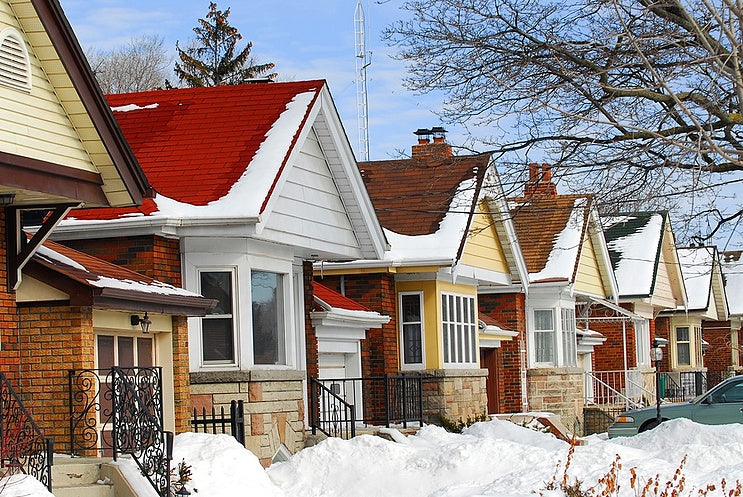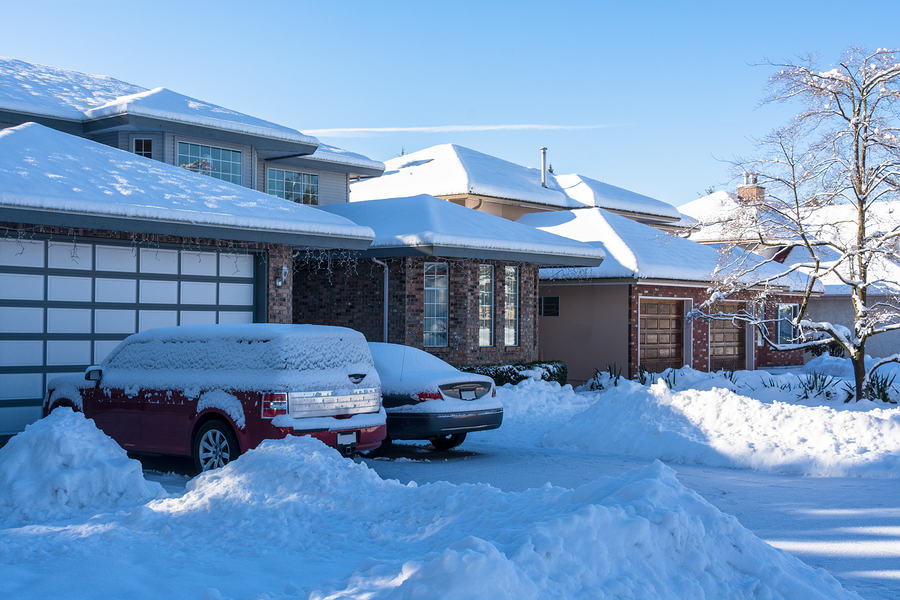Your driveway is the connection between your home and the world, and during the snowy winter months it becomes particularly important to have the assurance of safe access to both. Aside from the general hazards of snow, accumulating ice, and even black ice, slip-and-fall accidents are a major concern, as is the potential for losing control of your vehicle while trying to maneuver the steep grade of your driveway. The tendency to “gun it” to get up the slope of your driveway could result in damage to your vehicle, property, and even yourself.
What Makes a Driveway Snow-Melt System a Good One?
To avoid slip-and-fall accidents or slide-offs in your vehicle, it’s worthwhile to spend some time considering the best snow-melt system for your steep driveway. The following questions should help you arrive at a system that works for your needs and resources:
- Is the system effective?
- Is it cost efficient?
- Is it labor intensive or easily maintained?
- Does it have any potential drawbacks such as damage to my driveway or property?
With these questions in mind, let’s take a look at some of the options for managing a steep driveway during the winter months.
De-icers
De-icers such as rock salt or alternatives such as urea and calcium chloride are easily found at local hardware stores and are most effective when put down prior to heavy snows and storms. Because they typically work by combining with melting snow to form a solution that further melts snow and ice, de-icers become diluted and need to be reapplied. As well, de-icers may not “keep up” with heavy snowfall or stay in place during strong winds.
While using de-icers is a popular choice because of accessibility and generally low cost, they can have an adverse effect on your property. For example, rock salt can wreak havoc on a driveway surface due to freeze-thaw cycles that promote cracking and spalling. Its runoff can also be hazardous to plants and landscape, and it is toxic to pets, as well. Some of the chemical de-icer alternatives are less damaging to driveway surfaces and surrounding landscape but are not completely safe choices, either.
Traction-Boosting Agents
An alternative option is to put substances like gravel, kitty litter or sawdust down in the driveway to promote traction. These can also be used in combination with de-icers to encourage snow melt while improving driveway safety.
Depending on the size of your driveway, this may not be the most effective, cost efficient or clean method. The idea of shoveling up piles of slushy kitty litter or sawdust can be unattractive.
Mechanical Removal
Mechanical removal methods as a driveway snow-melt system involve shoveling, snow blowing or snow plowing. These can be done by you, or you can employ the services of local individuals or professional companies to do the work.
Once again, depending on the size of your driveway, this may or may not be a cost efficient strategy, and involves ongoing maintenance particularly during snowy days. Other drawbacks are also involved with this method, such as the potential hazards of shoveling snow or possible damage by equipment to your driveway or property.
Heated Driveways
A heated driveway is an effective way to keep your driveway clear of snow during the winter months. However, this option involves a large up-front cost as well as a major construction project for your driveway. While it can be efficient and easily-maintained, a heated driveway simply is not a practical option for many homeowners.
Heated Snow-Melting Driveway Mats
Heated snow-melting driveway mats are plugged in and can either be turned on manually to maintain a snow-free driveway, activated with a temperature-sensing control, or turned on remotely. They are made from durable rubber designed to be driven on and left outdoors all winter long.
Costing about $1 per day to run, these mats are an energy-efficient and effective option with little to no maintenance needed once they’ve been placed for the winter.
When you’re a homeowner with a steep driveway, it’s absolutely worth it to find a driveway snow-melt system that “checks all the boxes.” The peace of mind and assurance of safety are priceless when it comes to getting to and from your home during the snow season.


